I can’t recall when I first stumbled across Abelardo Morell’s photography. What I do recall, though, is the deliciously disorienting feeling I had when I saw the work.
Morell was born in Havana, Cuba in 1948. His family fled the island in 1962. I’ve no idea if this happened before or after the Cuban Missile Crisis, and I’m not sure it matters. Morell ended up in New York City. He eventually earned a B.A. from Bowdoin College and an M.F.A. from Yale University School of Art, and that he began. I’m not sure that matters either.
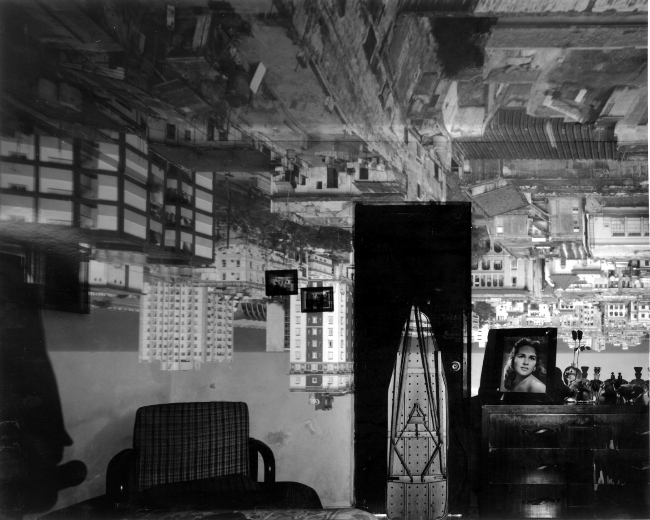
What matters is this: he began making art. My first exposure to his art was through his Camera Obscura series. The term camera obscura simply means “dark chamber.” It refers to a device–a box–into which light is allowed to enter through a small round aperture. Since light travels in a straight line, the rays reflected from a brightly lit subject outside the box pass through the small hole and cross and reform as an upside down image on the far end of the dark box.
The principle behind the camera obscura has been known for centuries. The philosopher Aristotle mentions the phenomenon. The first detailed explanation of the optics used in camera obscura was given by the 10th century Muslim scholar Abu Ali Al-Hasan Ibn al-Haitham. Room-sized camera obscura have been used for at least two centuries.
I say all that simply to make it clear that Morell is doing nothing entirely new. He is merely using an ancient principle and some long-established technologies. He is, however, using them in a novel way.
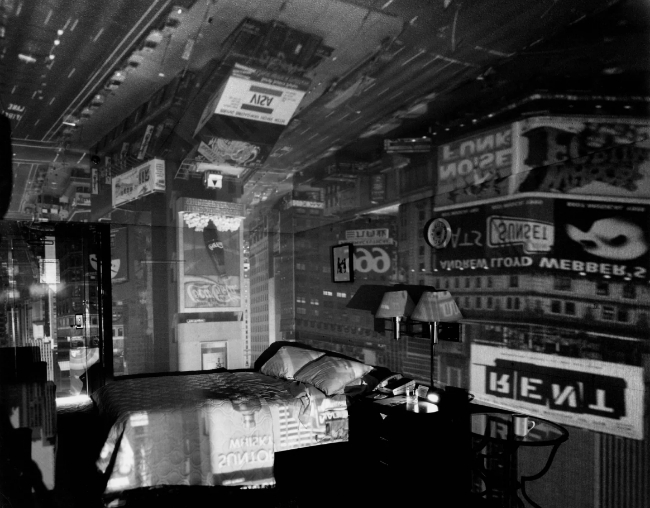
In Morell’s work, the ‘dark chamber’ is a large room. Not an empty room; just a room with all the furnishings that belong in that room. The combination of the room and the projected upside down image is initially disorienting. The eye seeks something familiar to which the mind can anchor itself. It takes a moment to realize that what we’re looking at.
Morell sometimes exaggerates that initial disorientation by including elements that further confuse the brain. A painting on a wall that’s been overlaid with an inverted image of what’s outside the wall becomes singularly strange; the painting becomes–or borders on becoming–an entirely different work of art within the current work of art. An open door further distorts the viewer’s already tenuous grasp on reality. The concept of scale becomes elastic. Thinking about it is enough to make your brain bleed.
Morell didn’t originally intend to create the Camera Obscura series as fine art. His initial purpose was to create some images that would help him teach his students in introductory photography courses. In 1991, while on sabbatical from the Massachusetts College of Art, he decided to make some simple teaching aids that would help explain the basic mechanics of optics. Morell decided to take photographs that demonstrated the physics of photography.
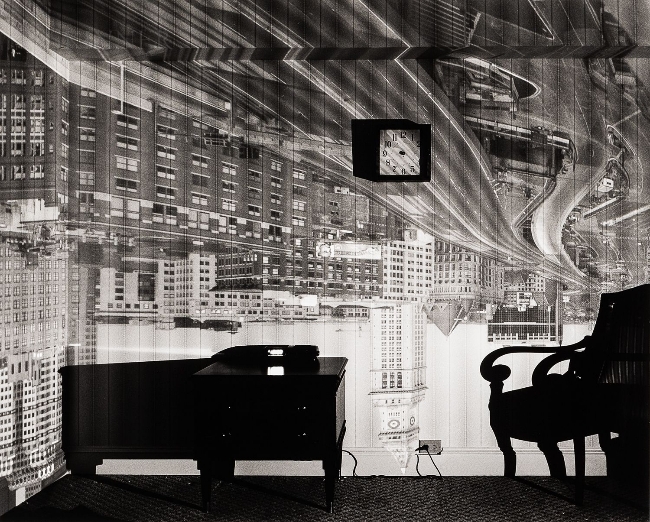
That’s an extraordinary (not to mention intensely geeky) project to undertake. His thought was simply to turn large rooms into very basic cameras obscura, and then photograph the result. He’d routinely turned his classroom into a camera obscura, so the concept didn’t seem overly complicated. However, despite his intimate knowledge of the mechanics of photography, Morell hadn’t realized how difficult it would be to create a clear, sharp photograph of a camera obscura projection. Nor had he anticipated how strange and lovely the result could be when the camera obscura is more than a blank box–when the ‘dark chamber’ is a room somebody uses.
The logistics of the Camera Obscura project are staggering. It cannot have been easy to find rooms that were visually interesting inside and that also had an exterior that would be visually compatible when projected upside down on the far interior wall. Morell not only had to find such rooms, he had to find such rooms owned by people who were willing to abandon them for at least one entire day.
Why an entire day? Because Morell discovered that each exposure for the Camera Obscura series requires approximately eight hours. Each exposure, eight hours. It must be remembered that while the images here look fairly well-lighted, the rooms they depict are actually quite dark. They are, quite literally, the interior of a camera; the only light comes from a single small opening, the aperture.
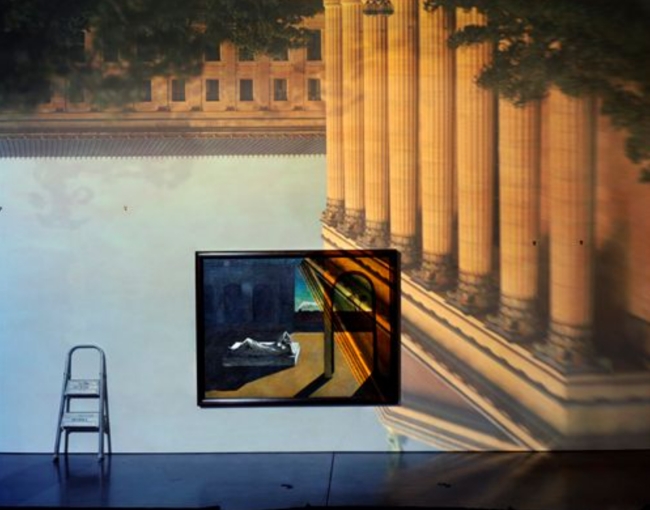
Because of the awkward logistics, it took Morell almost an entire summer to discover the proper exposure. When measuring exposures in terms of hours rather than fractions of seconds, it makes bracketing unrealistic.
On one occasion Morell decided to include himself in the photograph. That meant staying in the dark room during the full eight hour exposure. After three hours, he stated he was actively hallucinating. He eventually fell into a fitful sleep in which he tossed and turned, leaving him an indistinguishable blur on the final negative. He hasn’t tried to include human subjects since then.
In the past, cameras obscura were used to realistically depict the world outside the ‘dark chamber,’ and for that reason the focusing surface was always deliberately blank. Morell, however, combines the exterior world with the interior world, changing the way we perceive both. He insists that the room–the ‘dark chamber’–reflect its true purpose. A bedroom, a sitting room, a gallery. On top of that static vision of the room, he layers a dynamic vision of what exists outside the room at the time the image is being made. It’s that layering of visions, that lapidary approach, that lifts Morell’s Camera Obscura series out of the world of teaching aid and into the world of fine art.
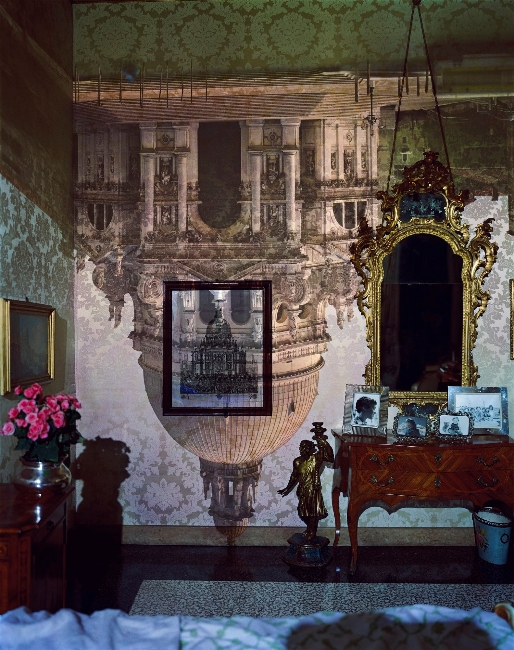
Mechanically, these are very simple images. Technically, they are sophisticated. Artistically, they are strangely subtle. Their initial power, that staggering disorientation, never entirely dissipates, but the longer one looks at the photographs the more one becomes aware of an indirect artfulness. There is a delicate but playful sensibility at work here, hidden behind that initial confusion.
Abelardo Morell, there’s no getting around it, is a photography geek. But he has found a brilliant way (in fact, several brilliant ways if you look at his other work) to lift his geekdom above and beyond his bright passion for the technological and mechanical aspects of photography. He somehow manages to combine the simple and the ornate into a single image that makes the brain bounce around like a pea in a tin can. Abelardo Morell makes art.
